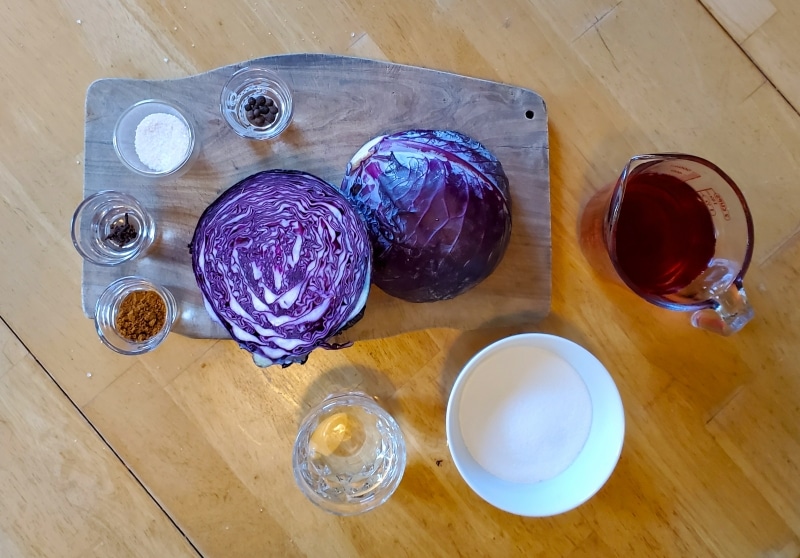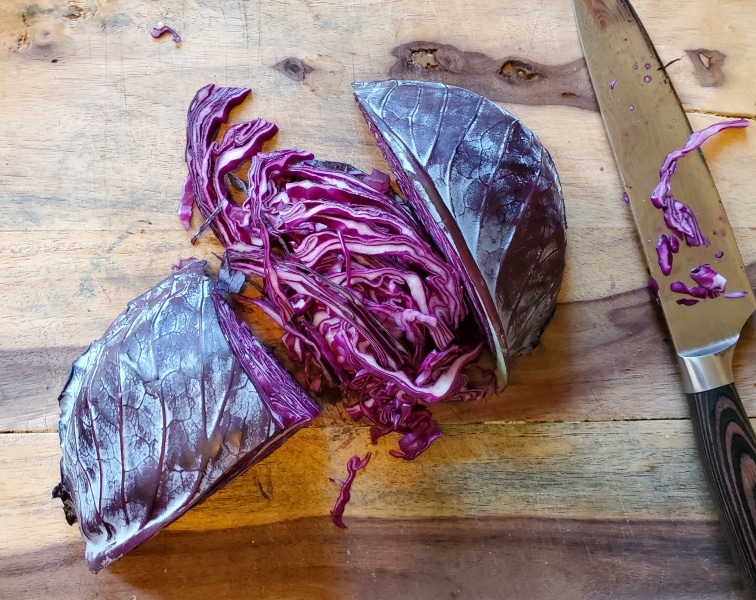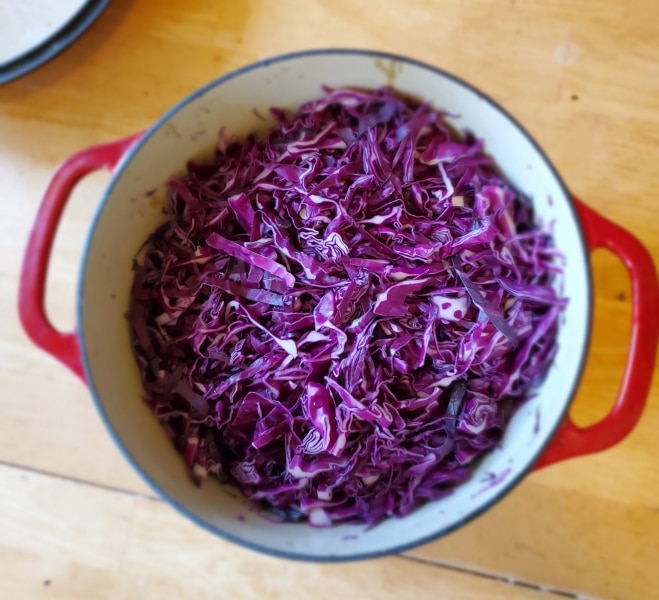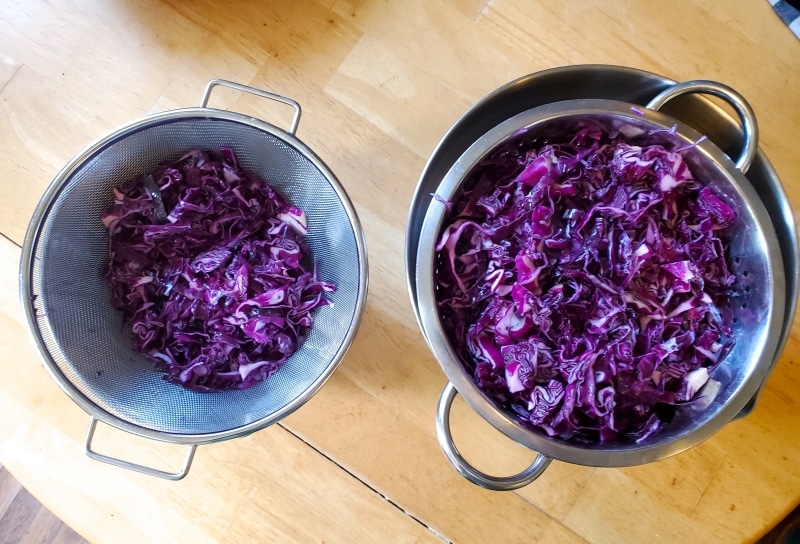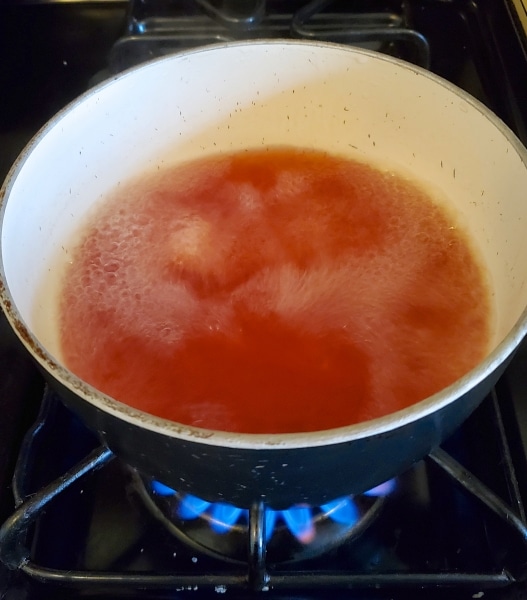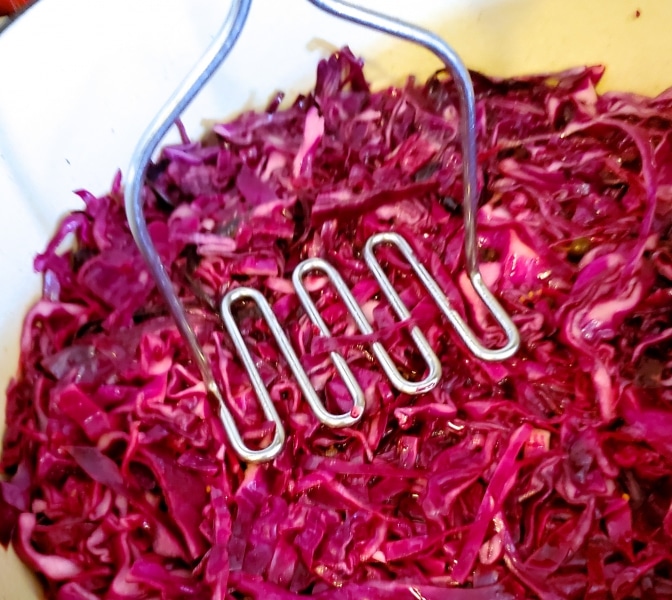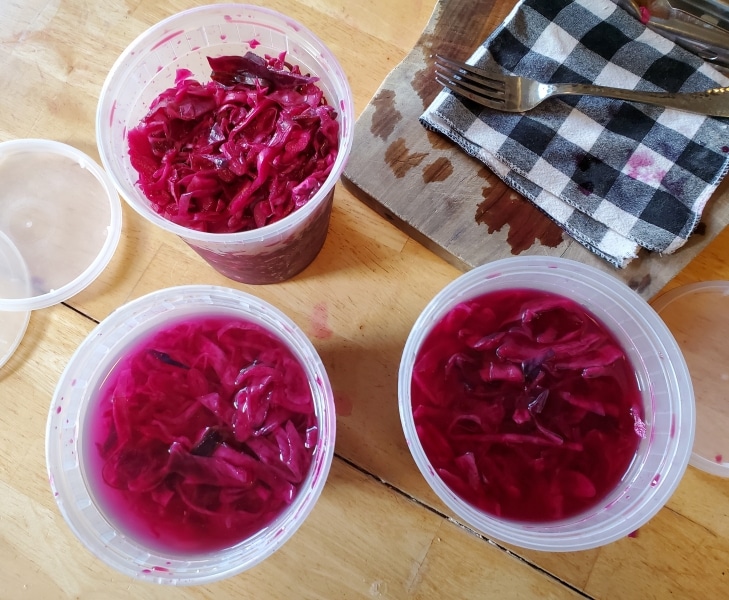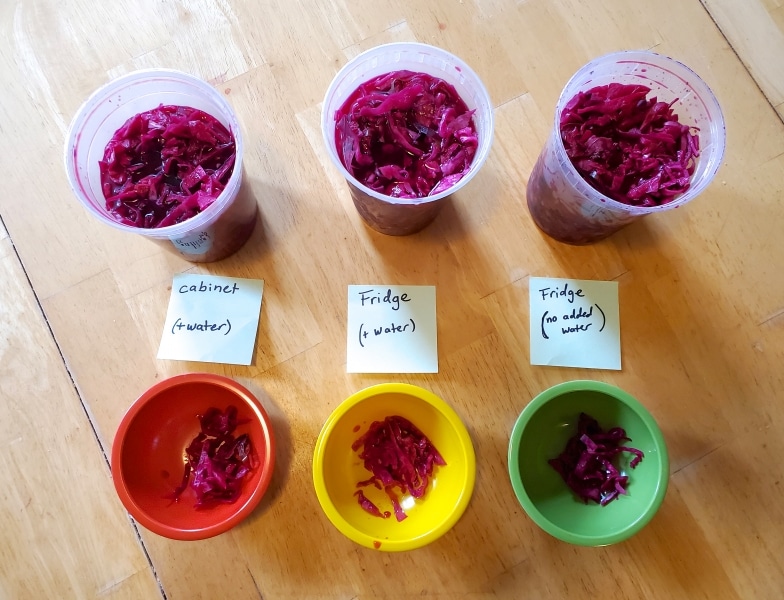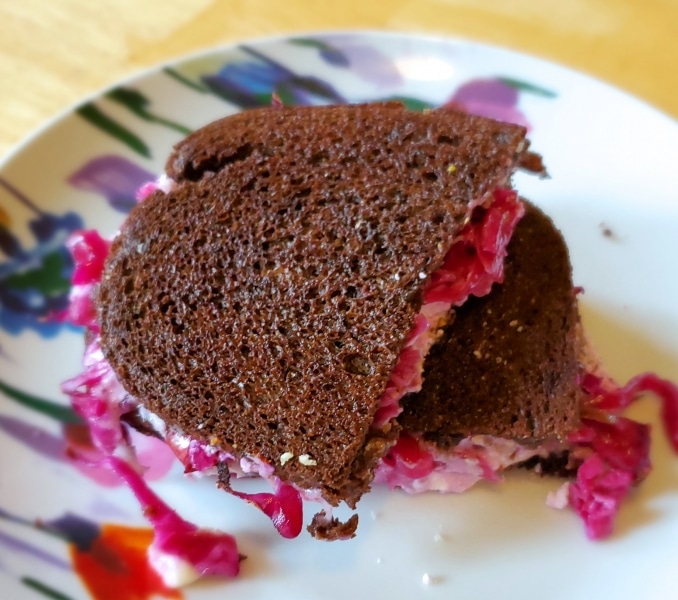Pickled Red Cabbage
Katie Maxwell, Visitor Services Coordinator
I never used to like anything pickled until I was talked into trying my grandmother’s sweet bread and butter pickles, and now I’m a complete convert. I’ve even made sauerkraut which hopefully will serve me well during this cooking adventure. You can find a 1792 recipe for “Red Cabbage” on page 21 of 35 Receipts from “The Larder Invaded.” I’ve decided to use the modernized 1980’s version mostly so I don’t have to deal with cochineal, dead bugs. I would rather live in blissful ignorance than think about where red dye comes from.
First the ingredients:
3 ½ lb. red cabbage
1 oz. sea salt or pickling salt
2 ⅓ cups of red wine vinegar
1 cup spring water *
¼ tsp. Whole cloves
½ tbsp. Mace in clove or shredded form
½ tsp. Whole allspice
1 cup white sugar (optional)
*I’m not buying bottled water just for pickling; filtered water should be fine.
Shred the cabbage paper-thin
Hopefully this is thin enough.
And put it in a pot or crock, scattering salt between the layers of cabbage.
I’m using a dutch oven. Does that count as a crock?
Cover the pot, and let stand overnight. In the morning, drain the cabbage, but do not rinse.
The cabbage won’t all fit in my colander.
Bring the vinegar to a boil, add the spring water, sugar (optional), and spices. Boil hard for four minutes.
I added the sugar. I like my pickles on the sweet side.
Put the cabbage in a clean crock and pour the boiling vinegar mixture over it. (We used a three-gallon salt-glazed crock). Press the cabbage down so that it is completely covered with vinegar.
I’m using the dutch oven again. I washed it. There’s something I noticed though, press as I may, the liquid never quite covers the cabbage.
Cover and set a way in a cold place, such as an unheated pantry or the refrigerator. Use as needed. This was originally treated as a salad.
I know from experience that this needs time to become pickled cabbage as opposed to vinegar flavored cabbage, so it’s going into the fridge for a while. However, after a few days, I realize that my dutch oven is taking up way too much space in the fridge, so I’ve decided on an experiment.
I’ve separated the cabbage and its liquid into three-quart containers. Since the liquid didn’t completely cover the cabbage, I’ve added water to two of the containers. Two containers will go in the fridge, one with added water, one without. The third container has added water and will go in the cabinet.
One week later:
It’s time for the taste test.
- Cabinet + Water: Smells briny and just a bit sour, but not unpleasant and lightly spiced. It definitely tastes tart, but it isn’t too much for me. My nose also tingles a bit with this one.
- Fridge + Water: This has a more vinegary smell, less spicy. This has less of a tart taste, but it is slightly bitter. The flavors don’t as blended
- Fridge (no added water): This smells a lot more sour. Nope, nope, nope. This tastes wrong, it is very bitter and sour. To the composter!
I think the lesson here is, always add water to cover your pickles. Also, I know the book says this was a salad, but it is very much a condiment. It would be good on hot dogs. Since I don’t have any hot dogs this week, I’m eating it on grilled cheese.

